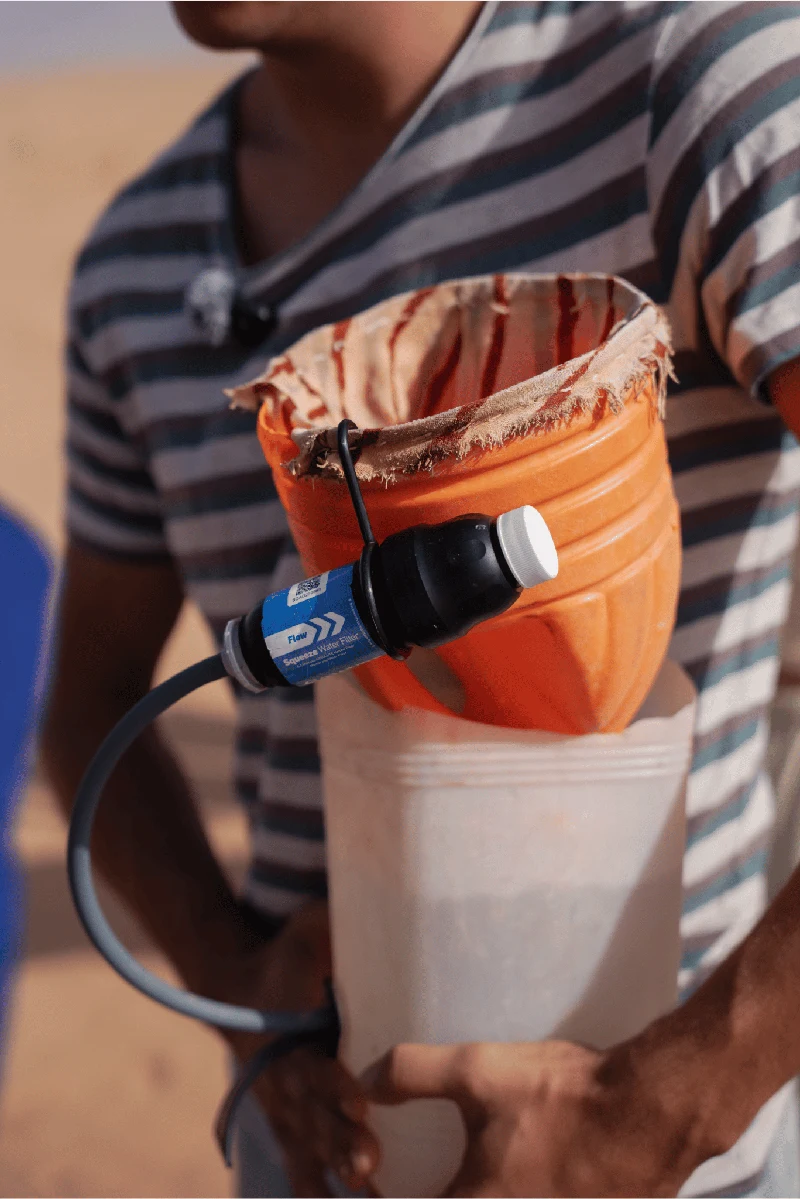

Nearly five years ago, I went on a quick weekend backpacking trip with two friends. We spent a few days out in the Ouachita Mountains laughing our way down trails and reading aloud by firelight. It was supposed to be a minor memory, one hike among many that we’d look back on fondly in a few years.
But for one of our party, this casual weekend trip was (possibly) life changing.

To be fair, Elizabeth Hamilton isn’t sure she contracted Lyme on that specific hike – she was an avid hiker, and the ticks that carry Lyme are spreading into many residential neighborhoods – but she says it makes the most sense. She never found a tick or noticed a rash. But it was shortly after our trip that she started to deal with persistent back pain. Strain from yoga? Stress from a busy job?
“I was working a lot and had a really stressful job, so I wasn't really prioritizing my health,” Hamilton says. “So, I just kind of pushed through it because I was having to put so much focus on my job. I just thought it would go away.”
Advil and heating pads didn’t do much, and within another month the pain had spread. Hamilton, a writer, was in too much pain to sit at her computer. “I was working on a story at one o'clock,” she says. “And then by two o'clock, I couldn't type because my hands hurt so badly, and I was like what is going on? I just didn't understand it.”
When her primary care doctors couldn’t figure out what was going on, Hamilton began a tour of specialists: a neurologist, a rheumatologist and an infectious disease doctor all left her without answers. Finally, an osteopath who had Lyme herself ordered an intensive test for Hamilton that confirmed she had Lyme. Long term antibiotics helped for a while, “basically until they didn’t,” Hamilton says, and now she relies on a functional medicine doctor to minimize continuing symptoms.
“You as a patient have to be your own advocate,” Hamilton says. “That's the only way that I've been able to get my health back, by being my own advocate. You just have to be willing to be the squeaky wheel. And frankly, it's extremely expensive, because Lyme isn't covered by insurance.”
The CDC reports that nearly half a million Americans are being treated for Lyme, but they acknowledge the number is probably much higher. Often easy to deal with if caught quickly, Lyme can be dangerous when it’s left to spread.
Lyme is the most common vector borne illness in the country, meaning a pathogen is transmitted from an animal to a human or vice versa. Borrelia burgdorferi bacteria live in the stomach of the blacklegged tick (Ixodes scapularis) and the western blacklegged tick (Ixodes pacificus), whose ranges used to be a bit more contained. But the CDC now lists ixodes’ range as all states east of the Rockies and a solid half of california. Their range has been expanded by climate change, and more of us have moved into the grassy, wooded areas they call home. More of us spend more time outdoors, and the pandemic saw record numbers of attendees at national parks across the country.
It’s possible that hikers won’t have to worry quite so much about bringing Lyme home in a few years.
Three different projects for evading Lyme are currently in the works: two vaccines and one monoclonal antibody medication.

Pfizer and Valneva’s vaccine candidate is in its third phase of clinical trials in thousands of people in Europe and America, and the companies are hoping to have it available to the public in 2025. Given over three doses, this vaccine would induce antibody production targeting a protein on the surface of the Borrelia burgdorferi bacterium.
MassBiologics is working on Lyme Pre Exposure Prophylaxis (Lyme PrEP), a monoclonal antibody that could convey immunity almost immediately. Instead of prompting your body to create antibodies, this one would deliver them wholly formed and ready to target the bacteria. The antibody treatment has passed a phase one clinical trial, and the creators expect to start the next rounds in 2023.
Researchers at Yale have also begun a vaccine candidate with the now famous mRNA technology, but it’s not yet being tested in humans. This one would spark a skin reaction, making it harder for ticks to hang onto vaccinated hosts long enough to transmit the bacteria, instead of targeting the bacteria themselves. It would also trigger a stronger redness reaction in the host, so ideally hikers will be able to find and remove a tick in time.

This isn’t the first time we’ve been optimistic about fighting lyme disease. In 1998, the FDA approved a vaccine called LYMErix for general use. At the time, the population interested in the vaccine was more limited. Lyme wasn’t as well known, and the ticks that carry the bacteria that causes Lyme had a smaller range. It was also a bulky commitment – three shots that weren’t always covered by insurance. Some who did take the vaccine reported arthritic side effects. While an FDA investigation didn’t find a strong enough relationship between patients’ arthritis and the vaccine to withdraw their approval, the manufacturers pulled the vaccine anyway after just three years on the market.
After years of advocating for herself both inside and outside of the medical community, Hamilton is excited but cautious about the potential vaccines, as am I. While the question is unfortunately no longer relevant to her, Hamilton would encourage her friends and family to get a vaccine once they were fully vetted and declared safe. Recently, one of Hamilton’s neighbors picked up a tick just walking through her neighborhood. “I don't know about this vaccine. But if it seems very reliable, then I would pay $1,500 to get it because this disease is like living in a nightmare. And you don't want it at all. Just don't get it. Wear bug spray.”
Even once vaccines are out, those of us who live or adventure in the tick territory would be wise to keep using bug bite prevention for any of several reasons.

First is just as added protection. As many more people began following debates on vaccine efficacy in the last few years, it’s become more common knowledge that they’re not infallible. Even the best simply lower your chances of getting a disease, and we can’t know the effectiveness of these potentials yet.
Another reason to continue wearing bug spray is that Lyme is only one of many tick-borne illnesses. Like many others who have contracted Lyme, Hamilton has a cocktail of vector borne illnesses that include bartonella and tick-borne relapsing fever. “It sounds like something that should have been gotten rid of hundreds of years ago,” she quips.

You might be able to guess exactly which bug bite prevention we’ll point you towards, but we’ll do it anyway. Sawyer Permethrin Premium Insect Repellent is a spray for your clothes that is incredibly effective at keeping ticks at bay. The best part about permethrin spray on your clothes, as opposed to bug spray for your body, is how long it lasts. As long as you remember to soak your shoes in it once a month, your chances of getting bitten by a tick are dramatically lower. The New York Times reported that “people who wore permethrin-treated sneakers and socks were nearly 74 times less likely to get a tick bite than those who wore untreated footwear, according to one study.”
“I would say whether this vaccine works effectively or not, wear bug spray,” Hamilton repeats. “Be really wary. And if you do get a tick bite, try to save the tick, get it checked out and be proactive.”
From the Squad
Campfire conversations with our community, from Squad Members and Ambassadors to Brand Partners and the Sawyer team.

















